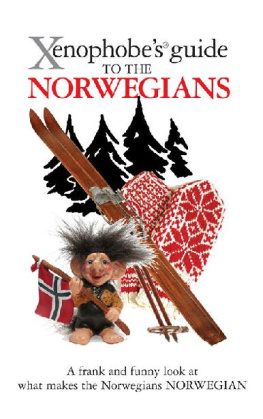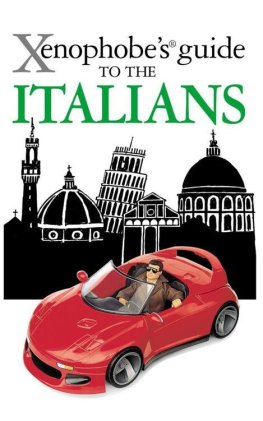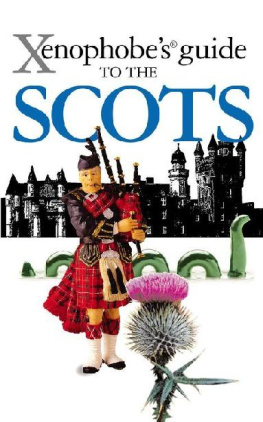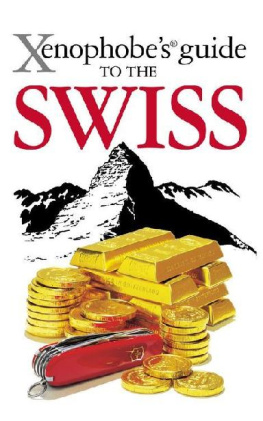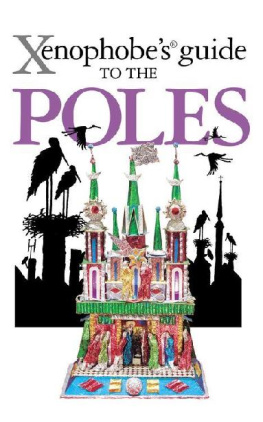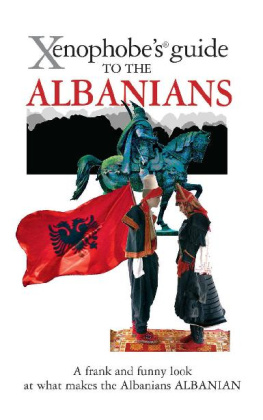Dan Elloway - Xenophobe’s guide to the Norwegians
Here you can read online Dan Elloway - Xenophobe’s guide to the Norwegians full text of the book (entire story) in english for free. Download pdf and epub, get meaning, cover and reviews about this ebook. year: 2013, publisher: Xenophobe’s® Guides, genre: Home and family. Description of the work, (preface) as well as reviews are available. Best literature library LitArk.com created for fans of good reading and offers a wide selection of genres:
Romance novel
Science fiction
Adventure
Detective
Science
History
Home and family
Prose
Art
Politics
Computer
Non-fiction
Religion
Business
Children
Humor
Choose a favorite category and find really read worthwhile books. Enjoy immersion in the world of imagination, feel the emotions of the characters or learn something new for yourself, make an fascinating discovery.
- Book:Xenophobe’s guide to the Norwegians
- Author:
- Publisher:Xenophobe’s® Guides
- Genre:
- Year:2013
- Rating:4 / 5
- Favourites:Add to favourites
- Your mark:
- 80
- 1
- 2
- 3
- 4
- 5
Xenophobe’s guide to the Norwegians: summary, description and annotation
We offer to read an annotation, description, summary or preface (depends on what the author of the book "Xenophobe’s guide to the Norwegians" wrote himself). If you haven't found the necessary information about the book — write in the comments, we will try to find it.
Xenophobe’s guide to the Norwegians — read online for free the complete book (whole text) full work
Below is the text of the book, divided by pages. System saving the place of the last page read, allows you to conveniently read the book "Xenophobe’s guide to the Norwegians" online for free, without having to search again every time where you left off. Put a bookmark, and you can go to the page where you finished reading at any time.
Font size:
Interval:
Bookmark:

Published in eBook form by
Xenophobes Guides
London SW9 7QH
Telephone: +44 (0)20 7733 8585
E-mail:
Web site: www.xenophobes.com
Copyright Xenophobes Guides Ltd., 2013
This e-Book edition is copyright material and must not be copied, reproduced, transferred, distributed, leased, licensed or publicly performed or used in any way except as specifically permitted in writing by the publishers as allowed under the terms and conditions under which it was purchased or as strictly permitted by applicable copyright law. Any unauthorised distribution or use of this text may be a direct infringement of the publishers rights, and those responsible may be liable in law accordingly.
Editor Catriona Tulloch Scott
Series Editor Anne Taut
Cover designer Jim Wire & Vicki Towers
Cover: Vintage skis and Selbu mittens.
Xenophobes is a Registered Trademark.
ePub ISBN: 9781908120694
Mobi ISBN: 9781908120700
Print ISBN: 9781906042431
Contents
The Norwegian population is 5 million, compared with 5.5 million Danes, 9 million Swedes, 81 million Germans, 64 million British, and 315 million Americans. Nearly a quarter of the Norwegian population lives in Oslo, and nearly 100,000 live permanently abroad.

Norway is a very long country, stretching from the top of Europe to the Arctic Circle. If you stuck a (very large) pin in Norways southern-most point and spun the country round, it would reach all the way to Italy.
Nationalism & Identity
Norwegians define themselves in simple terms: they are not Swedish. This simple definition comes from centuries of being dominated both politically and culturally by the Swedes, and millions of foreigners believing Norway to be the capital of Sweden (its not, just in case you are unsure).
Norwegians define themselves in simple terms: they are not Swedish.
To show the world that they are Norwegian and definitely not Swedish, every Norwegian, at any moment in time, will be wearing an item of clothing with a Norwegian flag on it.
How Norwegians see themselves
Once a Norwegian has established that he or she is not Swedish, their identity follows strict geographical rules. To the world, they are Europeans. To the Europeans, they are Scandinavians. To the Scandinavians, they are Norwegians. To other Norwegians, they are from the East or West coast. To anyone from the (East or West) coast, they are from a tiny island somewhere off that coast.
This island will usually have its own dialect, spoken by only the few thousand native islanders, its own football team and often its own single-person police force. Most Norwegians are very proud of their own little island, but they will still move away as soon as they are old enough.
There is a distinct split between the East and West coasts in Norway, emphasised by the very different dialects and by the distance between the two. Its a nine-hour drive from Oslo in the East to the city of Bergen in the West. Taking in two mountain passes, the journey can last considerably longer when snow closes the road to anything but column driving, when cars have to wait at the foot of the mountain for a snow plough and then follow the plough across the mountain in a long column.
People on the West coast claim that the city of Bergen is their capital as opposed to the official capital of Oslo, in the East.
People on the West coast claim that the city of Bergen is their capital as opposed to the official capital of Oslo, in the East. There are even two national newspapers, one published in Bergen and the other in Oslo. Both newspapers report national and international news, but largely ignore any events happening on the other side of the country.
It does not matter if a Norwegian is from the East or West. Because, when he looks North, he is definitely from the South.
People from the West think of Easterners as soft, self-obsessed and urban (which has negative connotations in nature-loving Norway), while people from the East refer to Westerners as insanely chatty, boastful and provincial. However, when he looks North, it does not matter if a Norwegian is from the East or West. Because, when he looks North, he is definitely from the South.
Northern Norway, which stretches up into the Arctic Circle, is a region in itself. People from the North are hardy, silent folk who spend half the year hunting, skiing and fishing in complete darkness. They think all Southerners, whether from the East or West coast, are soft suburban types. Southerners, for their part, are convinced all Northerners have been driven slightly crazy by the midnight sun.
The North includes around 70,000 Sami, the original indigenous people of Scandinavia. The Sami population stretches across the Arctic Circle, taking in Norway, Sweden, Finland and Russia. In the 1980s the Norwegian government passed laws that protected the Sami culture, language and way of life. Most Norwegians feel the Sami are essentially a separate nation living, for the most part, on Norwegian soil. The Sami tend to feel the same way.
When pushed, a Norwegian will describe himself as shy, hard-working and nature-loving. This is accurate, to an extent. A Norwegian is extremely shy, until he gets two drinks inside him, at which point he will talk to anyone he meets. He works extremely hard until the clock hits 4 pm, at which point he will switch off his computer and go home. And all Norwegians love nature, especially when trying to despatch it with a hunting rifle.
17 May
The Norwegians are proud of their land, with its stunning fjords and endless forests. They are proud of their government, national skiing team and education system. They are even proud of their high tax rate. They are, in short, proud to be Norwegian. But they do not like to shout about it, even though they sometimes cant help themselves. The shouting happens most obviously on 17 May, Norwegian National Day.
The Norwegians are proud to be Norwegian. But they do not like to shout about it, even though they sometimes cant help themselves.
On 17 May 1814 the founding fathers of modern Norway, the Eidsvollsmenn (literally, the Men of Eidsvoll) signed Norways constitution at the manor house in Eidsvoll. The constitution was considered to be one of the most democratically liberal in the world. However, at the time Norway was still under Swedish rule and the constitution was also seen as a declaration of independence. From that day onwards Norwegians have gathered on 17 May to express their nationalism, even though Sweden (peaceably) granted Norway its independence in 1905.
For a few hours, once a year, the entire country is draped in the Norwegian colours of red, blue and white.
17 May is the most important day in the Norwegian calendar. Its a day of childrens parades, flag waving, eating and drinking. For a few hours, once a year, the entire country is draped in the Norwegian colours of red, blue and white. In small villages, along fjords and mountain valleys, children march waving flags and people greet each other by saying Gratulerer med dagen (Congratulations for the day). In Oslo, the parade winds past the palace and the Royal Family stands for hours waving to the passing crowds. These celebrations even take place outside Norway. As long as there are more than two Norwegians, they will have a parade.
17 May is seriously hard work for parents. The day starts at 8 am with (simulated) canon fire to wake up any parents who have slept through the alarm. By this time most parents have already raised the national flag on the flagpole in the garden and decorated the balcony and porch with mini paper flags. They then dress the family in their Sunday best either a
Next pageFont size:
Interval:
Bookmark:
Similar books «Xenophobe’s guide to the Norwegians»
Look at similar books to Xenophobe’s guide to the Norwegians. We have selected literature similar in name and meaning in the hope of providing readers with more options to find new, interesting, not yet read works.
Discussion, reviews of the book Xenophobe’s guide to the Norwegians and just readers' own opinions. Leave your comments, write what you think about the work, its meaning or the main characters. Specify what exactly you liked and what you didn't like, and why you think so.

